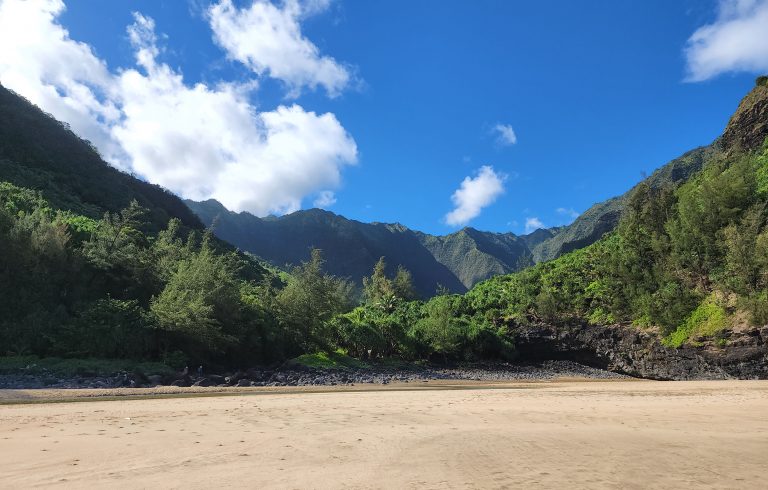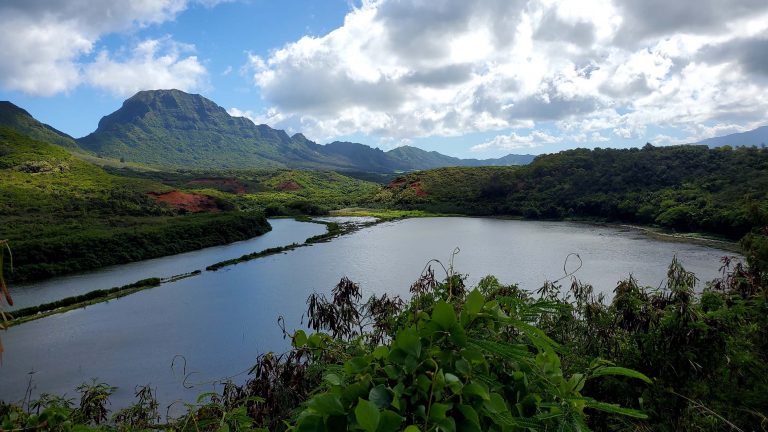Zombie Bunny is Reader-supported and may earn an affiliate commission through links on our site.

10 Secret Destinations Only Travel Pros Know
Discover 10 secret destinations around the globe that only travel pros know. Uncover hidden gems and step off the beaten path with our exclusive travel guide. #TravelSecrets #HiddenGems
Embark on a journey of discovery as we unveil ten secret destinations only known to travel pros, offering a unique blend of culture, history, and natural beauty. From the tranquil valleys of Leh in India to the vibrant culture of Valparaiso in Chile, the rugged wilderness of Knoydart in Scotland to the mystical allure of Socotra in Yemen, these hidden gems invite you to step off the beaten path. This guide provides insights into each destination’s unique charm, cultural experiences, local cuisine, best time to visit, and essential travel tips. Whether you’re a seasoned adventurer or a curious explorer, these lesser-known destinations promise an unforgettable travel experience. Explore the world’s best-kept secrets and enrich your travel tales!
Introduction

© Copyright , ZombieBunny.Org
Introduction to hidden travel spots
In a world where tourism has touched almost every corner, there are still some hidden gems that remain relatively undiscovered. These secret destinations, blessed with unparalleled beauty and unique cultures, provide the chance for travelers to engage with the world in a more intimate, less crowded way. They allow you to step off the beaten path and experience authentic cultures, pristine landscapes, and rich histories that few travelers get to see. From the rustic allure of a small Mediterranean town to the untouched wilderness of an Arctic archipelago, these destinations are a well-kept secret among travel pros.
These hidden spots offer a different kind of travel experience. They are not about ticking off a list of tourist attractions, but rather about immersing oneself in the local culture, savouring the unique gastronomy, engaging with the locals, and appreciating the breathtaking landscapes. The experience is about understanding that travel isn’t always about seeing the most famous sights, but discovering the hidden corners of the world, the places that don’t make it onto postcards or travel guides. Let’s embark on a journey to these secret destinations, where you can uncover the beauty of the world that only travel pros know.
Why these locations are special
What sets these secret destinations apart from the usual tourist hotspots? It’s their uniqueness. They offer something different, something that’s off the standard tourist track. These locations are special because they provide an escape from the crowds, an opportunity to delve deeper into local cultures, and a chance to witness nature in its untouched form. They represent a side of the world that is often overlooked but is equally, if not more, captivating.
These locations are the epitome of authenticity. Within their boundaries, you’ll discover traditions that have been preserved for centuries, cuisines that tell a story of their own, and landscapes that are nothing short of a masterpiece. Moreover, the limited footfall in these places ensures their conservation and allows for a more sustainable form of tourism. These destinations are not just locations, but experiences that leave a lasting impact. They offer a deeper connection to the world around us, a chance to gain a new perspective, and an opportunity to explore the road less traveled. They are the places where true travel stories are born. So join us, as we take you on a journey to the 10 secret destinations that only travel pros know about, and discover why these locations are truly special.
Overview of the blog content
In this insightful blog post, we will embark on a journey exploring 10 secret destinations that only the seasoned travel pros know about. Each destination carries its own unique charm, and we will delve into why these places deserve to be on your travel bucket list. We’ll start from the azure waters of the Amalfi Coast in Italy, and travel all the way to the unique biodiversity of Socotra in Yemen. Along the way, we will stop at the hidden gem of Dahab in Egypt, the untouched beauty of Svalbard in Norway, and the vibrant life of Valparaiso in Chile, among others.
Each destination will be explored in detail, with insights into their history, their unique attractions, and the best time to visit. We will also be providing tips on the local cuisine, cultural experiences, adventure activities, and more. This comprehensive guide aims to not only introduce you to these lesser-known destinations but also equip you with the knowledge to plan a memorable trip. Whether you’re a seasoned traveler looking for your next adventure or a beginner wanting to venture beyond the usual, this blog post is for you. So buckle up, and get ready to discover the world’s best-kept secrets that only travel pros know.
The Alluring Amalfi Coast Italy
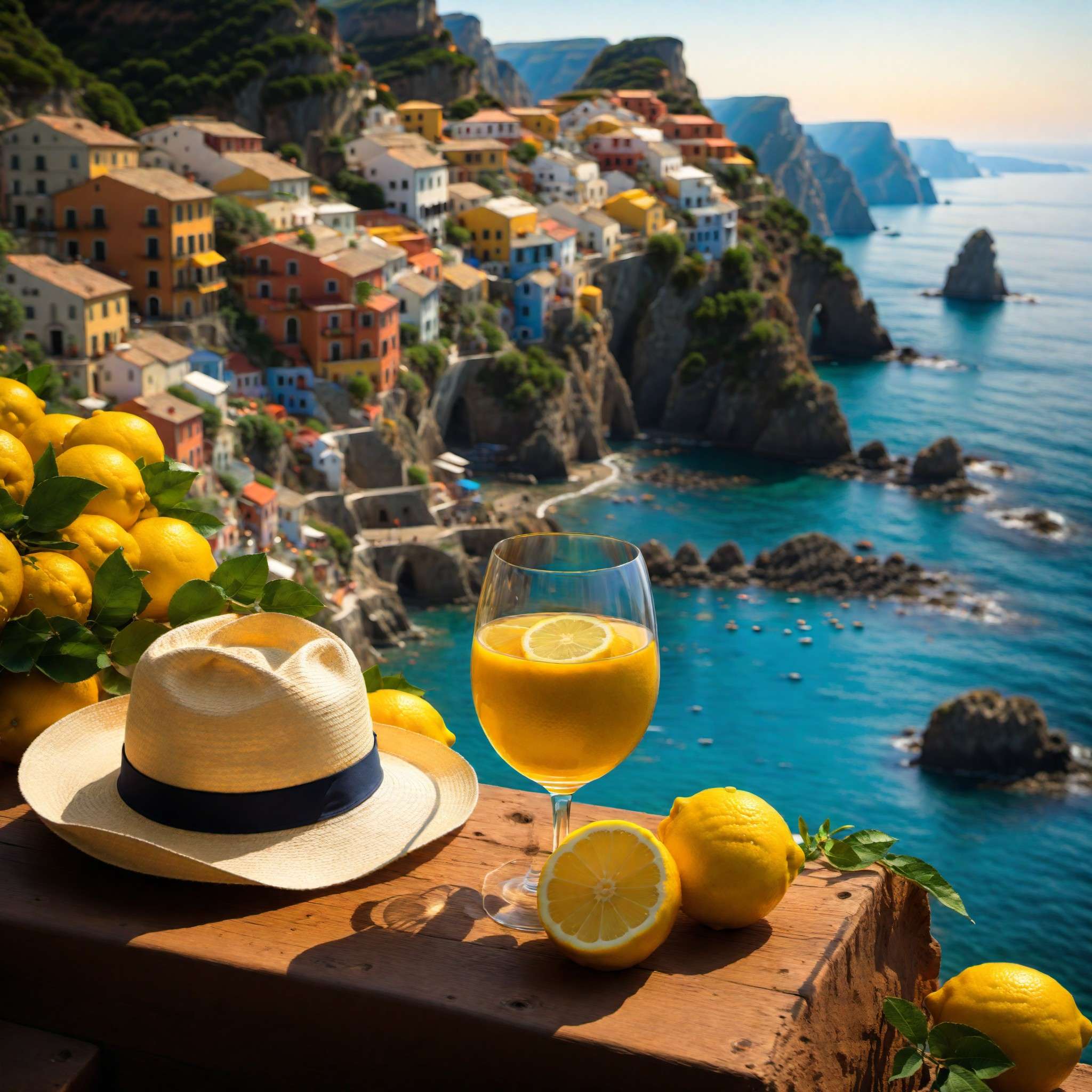
© Copyright , ZombieBunny.Org
Brief history of Amalfi Coast
Nestled in the heart of Italy’s Campania region, the Amalfi Coast is a picturesque stretch of coastline that has a rich history dating back to the Roman times. The Romans were the first to build their villas on this stunning coastline, attracted by its breathtaking natural beauty. However, it was during the Middle Ages that the Amalfi Coast truly flourished. It became a powerful maritime republic, known for its advanced navigation schools and the production of the “Amalfi Tables”, the oldest maritime code in the world.
The Amalfi Coast has been a magnet for artists, writers, and celebrities for centuries. Its craggy cliffs, dotted with pastel-colored villages and set against the backdrop of the azure Mediterranean Sea, have been a great source of inspiration. This area is also known for its production of limoncello liqueur and the unique handmade paper known as “bambagina”. Despite its popularity, the Amalfi Coast has retained its old-world charm, with its narrow, winding roads, quaint villages, and traditional fishing boats. It was listed as a UNESCO World Heritage site in 1997, further cementing its status as a cultural and natural treasure. Join us as we delve into the unique attractions of this alluring destination.
Unique attractions at Amalfi Coast
The Amalfi Coast, with its rugged cliffs, azure waters, and vibrant villages, is packed with unique attractions. Start your journey in Amalfi, the town that lends its name to the coast. Visit the striking Amalfi Cathedral, a 9th-century marvel renowned for its Byzantine architecture and the Cloister of Paradise, an Arab-inspired garden. Don’t miss the Paper Museum, where you can learn about the centuries-old tradition of paper-making in the town.
Further along the coast, you’ll find Positano, a cliffside village famous for its colorful buildings and pebble beaches. It’s a haven for artists, writers, and fashion enthusiasts. The town is known for its “Positano fashion”, a style of clothing that originated here in the 1960s. Nearby, the town of Ravello is a must-visit for music and art lovers. The annual Ravello Festival offers stunning performances with views over the Mediterranean.
One of the coast’s most unique attractions is the Emerald Grotto, a natural cave filled with emerald-hued water. Accessible by boat, it’s a mesmerizing experience. Finally, for the food enthusiasts, the Amalfi Coast is a paradise. The region is famous for its lemon groves and the resulting limoncello liqueur. Seafood, freshly caught and cooked in traditional ways, is another highlight. With these unique attractions, the Amalfi Coast offers a travel experience like no other.
Best time to visit
Choosing the best time to visit the Amalfi Coast depends on what you’re looking for from your Italian getaway. The coast boasts a Mediterranean climate, which means warm, dry summers and mild, wet winters. The peak tourist season is from June to August, when the weather is at its warmest and the towns are bustling with activity. However, this is also when the area is most crowded, and prices can be higher.
For a more relaxed experience, consider visiting in the shoulder seasons of spring (April to June) and fall (September and October). During these months, the weather is still pleasant, but the crowds are smaller. The spring sees the beautiful blooming of flowers, while the fall offers a chance to participate in the grape harvest and wine festivals.
Winter (November to March) is the quietest time to visit the Amalfi Coast. While the weather can be unpredictable with occasional rain, you’ll have the towns almost to yourself, and accommodation prices are at their lowest.
Regardless of when you choose to visit, the Amalfi Coast offers a wealth of experiences. From exploring historical sites, enjoying local cuisine, or simply soaking up the stunning views, there’s always a good reason to visit this beautiful part of Italy. So, pack your bags and get ready to discover the allure of the Amalfi Coast.
The Hidden Gem of Dahab Egypt

© Copyright , ZombieBunny.Org
Dahab’s transformation from fishing village to tourist destination
Dahab, a small town on the southeast coast of the Sinai Peninsula in Egypt, has undergone a significant transformation over the years. Once a small Bedouin fishing village, Dahab has blossomed into a vibrant tourist destination known for its golden sand beaches, clear blue waters, and the stunning Sinai mountains that serve as its backdrop.
The transformation began in the 1980s, when adventurous travelers started to discover Dahab’s potential. Its natural beauty, combined with a laid-back lifestyle, made it an attractive alternative to the more bustling tourist hotspots of Egypt. Dahab’s reputation as a diving paradise began to spread, attracting diving and snorkeling enthusiasts from around the globe. It’s particularly famous for the Blue Hole, a submarine sinkhole that is one of the world’s most renowned diving sites.
Despite its popularity, Dahab has managed to retain its traditional charm. Bedouin culture is still very much alive in the town, with many locals involved in tourism while preserving their traditional ways of life. The town’s transformation has been a balancing act of embracing tourism while preserving its cultural heritage.
Today, Dahab offers a unique blend of adventure and relaxation, with activities ranging from windsurfing and rock climbing to yoga retreats and desert safaris. Whether you’re an adrenaline junkie, a nature lover, or just looking for a place to unwind, Dahab has something to offer. Discover more about this hidden gem as we delve deeper into its unique attractions.
Diving spots in Dahab
Dahab is a haven for diving enthusiasts, home to some of the world’s most unique dive sites. The most famous is the Blue Hole, a submarine sinkhole that plunges over 100 meters into the depths of the Red Sea. This site is renowned among divers for its stunning underwater scenery and its challenging tunnel dive, known as the Arch. It’s a site that should be approached with caution due to its depth and the technical skills required, but the rewards for experienced divers are immense.
A more accessible site for divers of all levels is the Canyon, a large crack in the sea floor that descends to a depth of 30 meters. The entrance is a hole in the shallow reef that leads to a cavern filled with light from above, creating a truly spectacular sight.
For marine life enthusiasts, Eel Garden is a must-visit. Named for the colony of garden eels that live here, divers can observe these fascinating creatures as they peek out from the sandy sea floor.
Finally, the Lighthouse Reef, right in the heart of Dahab, is perfect for beginners and night dives. It offers an array of colorful corals, abundant fish life, and easy shore access.
With its clear waters, diverse marine life, and unique underwater landscapes, Dahab offers a world-class diving experience. Whether you’re a seasoned diver or a beginner, Dahab’s underwater world is waiting to be explored.
Cultural experience in Dahab
Dahab offers more than just stunning natural beauty and adventurous activities. It’s also a place where you can immerse yourself in a rich cultural experience. Bedouin culture is deeply ingrained in Dahab, and a visit here offers an insight into their traditional way of life. Participate in a Bedouin dinner in the desert, where you can savor traditional Bedouin dishes cooked over an open fire, enjoy Bedouin music, and learn about their nomadic lifestyle.
Dahab’s cultural experience extends to its food scene as well. The town offers a variety of restaurants serving both local and international cuisines. Don’t miss trying out the seafood, freshly caught and cooked in traditional Egyptian style. For a truly authentic experience, try Bedouin tea, a sweet and aromatic beverage that is a staple in Bedouin culture.
Shopping in Dahab is another cultural experience, with numerous shops and markets selling a range of goods. From traditional Bedouin crafts to handmade jewelry and spices, there’s plenty to explore. Remember, haggling is a part of the shopping culture in Egypt, so don’t be afraid to negotiate prices.
For those interested in history, Saint Catherine’s Monastery, one of the oldest working Christian monasteries in the world, is a short drive away. Surrounded by rugged mountains, it’s a place of profound historical and spiritual significance.
From its rich Bedouin culture to its vibrant food scene and historical sites, Dahab offers a cultural experience that complements its natural and adventurous attractions.
The Untouched Beauty of Svalbard Norway

© Copyright , ZombieBunny.Org
Wildlife and nature in Svalbard
The untouched beauty of Svalbard, an archipelago situated between Norway and the North Pole, offers an unparalleled wildlife and nature experience. The Arctic wilderness of Svalbard is home to an array of unique species that have adapted to the harsh polar conditions. Here, you can witness the king of the Arctic, the polar bear, in its natural habitat. With more polar bears than people, Svalbard is one of the best places in the world to see these magnificent creatures.
But the wildlife experience doesn’t stop there. Svalbard is also home to reindeer, Arctic foxes, walruses, and a variety of seabirds. The bird cliffs in Svalbard, with thousands of birds nesting, are a sight to behold. Svalbard is a dream destination for birdwatchers with species like the Little Auk, Brünnich’s Guillemot, and Arctic Tern making it their home.
When it comes to nature, the landscape of Svalbard is just as impressive. From its towering glaciers and dramatic fjords to its snow-covered mountains and frozen tundra, the archipelago is a showcase of stark Arctic beauty. During summer, the tundra comes to life with Arctic flowers, creating a colorful contrast to the otherwise icy landscape.
Whether you’re exploring by boat, on foot, or on a snowmobile, the wildlife and nature in Svalbard are nothing short of breathtaking. It’s a place where nature rules and humans are just visitors, offering a unique travel experience you won’t find anywhere else.
Adventure activities in Svalbard
Svalbard, with its rugged landscapes and abundant wildlife, is a playground for adventure seekers. The archipelago offers a range of activities that let you experience its natural beauty up close. One of the most popular activities is dog sledding. Whether in the snowy winter or the summer’s Midnight Sun, you can experience the thrill of steering your own dog sled.
For those looking to explore the icy landscapes, snowmobile tours are a perfect choice. These tours can take you across frozen fjords, past towering glaciers, and even to the east coast where you might get a chance to spot polar bears. Remember, due to Svalbard’s strict environmental regulations, snowmobile tours are guided and follow established trails.
In summer, when the ice recedes, kayaking becomes a popular activity. Paddling through the calm Arctic waters, surrounded by icebergs and wildlife, is a truly unique experience. For the more adventurous, there’s ice caving in Svalbard’s numerous glaciers. Exploring these remarkable blue ice caves will feel like stepping into another world.
Hiking is another way to experience Svalbard’s wilderness. However, due to the presence of polar bears, all hikes outside of the main settlements require an armed guide. Whether you choose to explore by foot, snowmobile, or kayak, adventure activities in Svalbard offer a unique way to experience this Arctic wonderland.
Climate and preparation tips
The climate in Svalbard is Arctic, with the average summer temperatures hovering around 5°C and winter temperatures often dropping below -20°C. The archipelago experiences the phenomena of Midnight Sun in the summer when the sun doesn’t set for several months, and Polar Night in the winter when the sun doesn’t rise. This unique climate offers its own set of experiences but also requires careful preparation.
Dressing in layers is key to staying comfortable in Svalbard’s climate. Make sure to have a warm, windproof layer on the outside, and several lighter layers underneath so you can adjust as needed. A good pair of insulated, waterproof boots is essential, and don’t forget thermal gloves, a hat, and a scarf.
If you plan on participating in outdoor activities, it’s advisable to have high-quality equipment suitable for Arctic conditions. Many tour operators provide necessary equipment for their excursions, but it’s always a good idea to check in advance.
Remember that Svalbard is a remote location with limited medical facilities, so it’s essential to have a comprehensive travel insurance that covers emergency evacuation. Also, due to the presence of polar bears, it’s illegal to travel outside the main settlements without appropriate polar bear protection, usually a rifle and the knowledge of how to use it.
Visiting Svalbard is an adventure, and with the right preparation, you can make the most of your Arctic experience. So pack your warm clothes and adventurous spirit, and get ready to explore the untouched beauty of Svalbard.
The Vibrant Life of Valparaiso Chile

© Copyright , ZombieBunny.Org
Arts and culture in Valparaiso
Valparaiso, a port city on Chile’s coast, is a vibrant hub of arts and culture. Known as “Little San Francisco” and “The Jewel of the Pacific”, the city is famous for its colorful houses, bohemian culture, and its plethora of street art. The city’s historic quarter is even recognized as a UNESCO World Heritage Site, highlighting its cultural significance.
The street art in Valparaiso is an expression of the city’s soul. Nearly every wall, stairway, and alley is adorned with murals, graffiti, and stencil work, transforming the city into an open-air museum. Artists from around the world come to Valparaiso to leave their mark, contributing to the city’s evolving urban canvas.
Valparaiso is also renowned for its active arts scene. The city is home to many galleries and workshops where local artists showcase their works. The Cultural Park of Valparaiso, once a prison, is now a cultural center hosting exhibitions, performances, and workshops.
The city’s cultural vibrancy extends to its festivals. The New Year’s Fireworks Festival is one of the largest in South America, attracting visitors from around the world. The Carnaval Cultural de Valparaiso is another major event, featuring parades, music, dance, and theater.
Valparaiso’s arts and culture scene is a testament to its resilience, creativity, and spirit. It’s a city that embraces its history while constantly reinventing itself. From its street art to its cultural festivals, Valparaiso offers a cultural experience as colorful and diverse as its cityscape.
Local cuisine and drinks
The vibrant city of Valparaiso is not only a feast for the eyes but also for the palate. The city’s culinary scene is as diverse and colorful as its streets, offering a mix of traditional Chilean dishes and innovative cuisine. Being a coastal city, seafood is a staple in Valparaiso. Don’t miss trying “Chorrillana”, a local dish of fries topped with sautéed onions, beef, and fried eggs, or “Cazuela de Mariscos”, a hearty seafood stew.
For a truly local experience, head to the city’s bustling fish market, where you can enjoy the catch of the day cooked in simple, delicious ways. The market is also a great place to try “Empanadas de Mariscos”, a type of seafood pie that’s a favorite among locals.
When it comes to drinks, Chile is famous for its wine, and Valparaiso is no exception. The nearby Casablanca Valley is known for its excellent white wines, especially Sauvignon Blanc and Chardonnay. A trip to one of the vineyards in the valley is a must for wine lovers.
Another popular local drink is “Pisco Sour”, a cocktail made with Pisco, a type of brandy, mixed with lime juice, syrup, and egg whites. It’s a refreshing drink that’s perfect for sipping while enjoying the city’s stunning views.
From its fresh seafood to its local wines and cocktails, Valparaiso offers a culinary experience that adds to the richness of its cultural vibe. So, get ready to tantalize your taste buds as you explore this vibrant city.
Historical places to visit
Valparaiso is steeped in history, and a walk around the city is like taking a step back in time. A must-visit is the Historic Quarter of the Seaport City of Valparaiso, a UNESCO World Heritage Site. This area comprises of 15 funicular lifts (locally known as “ascensores”) built around the turn of the 20th century. These ascensores provide not only a unique mode of transport but also stunning views of the city and the bay.
Another notable historic site is La Sebastiana, the former house of Chile’s Nobel Prize-winning poet, Pablo Neruda. Today, it’s a museum dedicated to the poet’s life and work. The house itself is a work of art, filled with quirky objects and offering panoramic views of the city.
The Naval and Maritime Museum is another site of historical significance. It showcases Chile’s naval history and pays tribute to the heroes of the War of the Pacific. Nearby, the Paseo 21 de Mayo offers one of the best views of Valparaiso’s port, the very heart of the city’s history.
Finally, the Open Air Museum of Valparaiso offers a unique blend of history and art. The museum is a series of 20 murals painted on the walls of houses in the Bellavista and Florida neighborhoods, making the city’s history come alive through art.
These historical places offer a glimpse into Valparaiso’s rich history, adding another layer to the city’s vibrant charm.
The Quiet Charm of Gjirokaster Albania

© Copyright , ZombieBunny.Org
Exploring the old town of Gjirokaster
Gjirokaster, located in Southern Albania, is a city steeped in history and tradition. It’s often referred to as the “City of Stone” due to its beautifully preserved Ottoman-era architecture made of stone. The heart of Gjirokaster lies in its old town, a UNESCO World Heritage site that holds a unique charm and offers a snapshot of the city’s rich past.
Walking through the cobblestone streets of the old town is like stepping back in time. You’ll be greeted by a maze of narrow lanes lined with traditional tower houses, known as “kule”. These houses, with their distinctive stone roofs, wooden balconies, and fortress-like appearance, are unique to the region. Many of these houses are open to the public, offering an insight into traditional Albanian life.
The centerpiece of the old town is the Gjirokaster Castle, one of the largest in the Balkans. The castle offers breathtaking views of the city and the surrounding valley. Inside, you’ll find the Museum of Arms, which displays a collection of weapons from the prehistoric times to the Communist era.
The old bazaar is another highlight of the old town. Here, you can shop for local crafts, antiques, and traditional Albanian products. The bazaar is also a great place to sample local cuisine, with several restaurants serving traditional dishes like “qifqi”, a type of rice ball, and “byrek”, a savory pie.
Exploring the old town of Gjirokaster offers a unique journey into Albania’s history and culture, making it a must-visit for any travel enthusiast.
Historical monuments and museums
Gjirokaster is a treasure trove of historical monuments and museums. The Gjirokaster Castle, also known as the Fortress, is a must-visit. This 12th-century castle offers panoramic views of the city and houses the Museum of Arms. The museum displays an array of weaponry from the prehistoric era to the communist period, offering a unique insight into the region’s turbulent history.
Another historical monument of note is the Skenduli House, one of the best-preserved traditional Ottoman houses in Gjirokaster. A visit here is like stepping into a time machine, with each room showcasing a different aspect of life in the 18th century. From the ornate decoration to the traditional layout, the Skenduli House provides a fascinating glimpse into the past.
The Ethnographic Museum, located in the birthplace of the former Albanian dictator Enver Hoxha, is another must-visit. The museum showcases traditional Albanian life, with a collection of costumes, tools, and household items.
The Zekate House, one of the grandest kules in Gjirokaster, is also worth a visit. Its twin towers and beautiful interiors offer a glimpse into the opulent lifestyle of the city’s elite during the Ottoman era.
These historical monuments and museums in Gjirokaster provide a deep understanding of the city’s rich history and culture. Exploring them is like unraveling the pages of a living history book, making Gjirokaster a dream destination for history buffs and culture enthusiasts.
Albanian traditions and food
Gjirokaster, with its rich cultural heritage, is a great place to experience traditional Albanian customs and cuisine. Albanian traditions are deeply rooted in hospitality, with locals known for their warm and welcoming nature. Traditional music and dance play a significant role in celebrations and festivals. The city’s annual National Folklore Festival, held at the Gjirokaster Castle, showcases traditional Albanian music, dance, and costumes, and is a must-see if you’re visiting during this time.
When it comes to food, Gjirokaster offers a distinct culinary experience that reflects its rich cultural heritage. Traditional Albanian cuisine is Mediterranean, with Turkish, Greek, and Italian influences. Local dishes to try include “byrek”, a type of pie filled with cheese, spinach, or meat, and “tave kosi”, a baked lamb dish with yogurt.
Gjirokaster is particularly known for its “qifqi”, rice balls seasoned with mint. Another specialty is “Oshaf”, a fig and sheep’s milk pudding that is a popular dessert. The city’s old bazaar is a great place to sample these traditional dishes and to experience the lively local food culture.
Food in Gjirokaster is not just about the taste, it’s about the experience. Traditional Albanian meals are a social event, often shared with family and friends, and can last for several hours. So, get ready to savor the flavors of Gjirokaster and immerse yourself in Albanian traditions.
The Mystical Aura of Leh India

© Copyright , ZombieBunny.Org
Spiritual retreats in Leh
Leh, a high-desert city in the Himalayas, is a destination that offers more than just breathtaking landscapes. It’s also a place of spiritual retreat, where travelers can find tranquility and insight amid the natural beauty. The region is steeped in Tibetan Buddhist culture, and there are several monasteries that offer spiritual retreats.
One of the most renowned is the Thiksey Monastery, which resembles a mini-Potala Palace. Here, you can participate in meditation sessions, listen to the chants of the monks, and learn about Buddhist philosophies. The monastery is also home to a two-story statue of Maitreya Buddha and offers panoramic views of the Indus Valley.
Another popular spiritual retreat is the Hemis Monastery, one of the oldest and richest Buddhist monasteries in Ladakh. The monastery is especially known for its annual Hemis festival, a vibrant celebration filled with music, dance, and spiritual rituals.
The Phyang Monastery offers a serene retreat with its beautiful frescoes and ancient scriptures. Here, you can join the monks in their daily prayers, meditate in the peaceful surroundings, or simply enjoy the stunning views of the surrounding landscapes.
For those seeking a more immersive spiritual experience, the Druk White Lotus School offers residential meditation retreats. These retreats offer a chance to disconnect from the hustle and bustle of daily life and reconnect with your inner self.
Whether you’re in search of spiritual growth or simply a peaceful getaway, the spiritual retreats in Leh offer a serene sanctuary in the heart of the Himalayas.
Trekking routes and adventure
Leh, with its rugged terrain, snow-capped peaks, and breathtaking landscapes, is a paradise for trekkers and adventure enthusiasts. The region offers a variety of trekking routes, each with its unique challenges and rewards. One of the most popular is the Markha Valley Trek, known as the ‘tea house trek’. It takes you through remote villages, high mountain passes, and stunning landscapes, offering a glimpse into the traditional Ladakhi lifestyle.
Another challenging but rewarding trek is the Chadar Trek, which involves walking over the frozen Zanskar River. This trek is only possible during the winter months when the river freezes over, and offers an unforgettable adventure.
For a less strenuous but equally rewarding experience, the Sham Valley Trek, also known as the ‘Baby Trek’, is an excellent choice. This trek takes you through some of the most beautiful villages of Ladakh, with plenty of opportunities to interact with the locals and learn about their culture.
Adventure in Leh is not limited to trekking. The region is also famous for mountain biking, with several trails offering thrilling rides through the Himalayan landscapes. River rafting in the Indus and Zanskar rivers is another popular activity, offering an adrenaline-filled experience amid stunning surroundings.
Whether you’re an experienced trekker or a novice adventurer, Leh offers a plethora of options to quench your thirst for adventure, all set against the backdrop of its awe-inspiring natural beauty.
Climate changes and acclimatization
Leh, located at an altitude of 3,500 meters above sea level, experiences a harsh and dry climate. The city experiences summer from June to September when temperatures can go up to 25°C during the day, but can drop to around 10°C at night. Winter, from October to May, is extremely cold with temperatures often dropping below freezing point.
Due to the high altitude, it’s essential for travelers to acclimatize to avoid Acute Mountain Sickness (AMS). Symptoms of AMS include headache, nausea, dizziness, and shortness of breath. It is recommended to rest for at least 48 hours upon arrival in Leh to allow your body to adjust to the high altitude. Staying hydrated and avoiding strenuous activity can also help prevent AMS.
When planning your trip, it’s important to consider the climate and prepare accordingly. Layered clothing is recommended as temperatures can vary significantly between day and night. Sunscreen, sunglasses, and a hat are essential due to the strong UV radiation at high altitudes.
If you plan to trek or participate in other outdoor activities, make sure to check the weather conditions and pack appropriate gear. Warm clothing, sturdy shoes, and equipment such as trekking poles and headlamps can make your adventure safer and more enjoyable.
A trip to Leh is an adventure in itself, and with the right preparation, you can enjoy all that this stunning destination has to offer.
The Rustic Appeal of Goreme Turkey

© Copyright , ZombieBunny.Org
Hot air balloon ride in Cappadocia
Nothing captures the rustic appeal of Goreme, a town in Cappadocia, Turkey, quite like a hot air balloon ride. It’s an experience that combines adventure, romance, and breathtaking beauty, offering a unique perspective of the region’s stunning landscapes. The sight of hundreds of colorful hot air balloons rising with the sun is an iconic image of Cappadocia and a must-do for any visitor.
The balloon ride takes you over Cappadocia’s surreal landscapes, filled with fairy tale chimneys, ancient rock formations, and the beautiful valleys. As the balloon ascends, you’ll be greeted with panoramic views of the region’s unique topography, dotted with ancient cave dwellings and historical sites. The ride offers an excellent opportunity for photography, with the changing light of sunrise creating magical scenes.
The hot air balloon ride in Cappadocia is not just about the views. It’s about the entire experience. From the preparation of the balloon for flight to the traditional champagne toast upon landing, it’s an adventure that’s as unforgettable as the landscapes you’ll see.
Safety is a priority for hot air balloon operators in Cappadocia, with experienced pilots and well-maintained equipment. Most companies offer pick-up and drop-off services from your hotel, making it a hassle-free experience.
So, whether you’re seeking adventure, romance, or simply want to witness the beauty of Cappadocia from a different perspective, a hot air balloon ride is an experience not to be missed.
Exploring the underground cities
Goreme, located in Cappadocia, Turkey, is known for its unique geological formations and historical significance. But the region’s appeal doesn’t stop at the surface. Beneath the rugged landscapes lie the fascinating underground cities, a testament to human resilience and ingenuity.
Derinkuyu and Kaymakli are two of the most famous underground cities in Cappadocia. These multi-level cities, carved into the soft volcanic rock, were used by early Christians as hiding places during times of persecution. The cities are complete with rooms, stables, cellars, storage areas, and even churches, providing a unique insight into the lives of the people who once lived here.
Exploring these underground cities is a thrilling experience. As you descend into the depths, you’ll navigate through narrow tunnels and small chambers, each with its unique features. Despite being centuries old, the cities are well-preserved and safe to explore, with ventilation shafts ensuring fresh air even at the deepest levels.
A guided tour is recommended to fully appreciate the history and complexity of these underground cities. Knowledgeable guides can provide valuable insights into the construction methods, the purpose of different rooms, and the historical context of these remarkable structures.
Exploring the underground cities of Cappadocia offers a unique journey into the past, revealing a side of Goreme that’s as intriguing as its beautiful landscapes. It’s a must-do experience for history buffs and anyone seeking a unique adventure.
Turkish culture and cuisine
Experiencing the local culture and cuisine is an integral part of any trip to Goreme, Turkey. Turkish culture is a rich tapestry of traditions, customs, and influences from various civilizations that have thrived in the region over the centuries. Hospitality is deeply ingrained in Turkish culture, and as a visitor, you’ll often find yourself welcomed with a warm smile and a cup of Turkish tea.
Goreme, with its unique blend of history and natural beauty, offers plenty of cultural experiences. You can learn about the region’s history at the Goreme Open-Air Museum, witness traditional pottery making in Avanos, or attend a traditional Turkish night show featuring folk dances and music.
Turkish cuisine is equally diverse and flavorful, with dishes that reflect the country’s rich cultural heritage. In Goreme, you can enjoy traditional dishes like “pottery kebab” – meat and vegetables cooked in a clay pot, or “manti” – tiny dumplings topped with yogurt and spices. Street food like “gozleme” – a type of stuffed flatbread, and “simit” – a sesame-covered bread ring, are also worth trying.
No culinary exploration in Turkey is complete without tasting the country’s famous sweets. “Baklava”, a sweet pastry made of layers of filo filled with chopped nuts and sweetened with syrup or honey, is a must-try. So is “Turkish delight”, a family of confections based on a gel of starch and sugar.
Whether you’re exploring the historic sites, sampling the local cuisine, or interacting with the friendly locals, Goreme offers a cultural experience that’s as rich and rewarding as its stunning landscapes.
The Indigenous Roots of Rapa Nui Chile

© Copyright , ZombieBunny.Org
History and mystery of Moai statues
Rapa Nui, also known as Easter Island, is a remote volcanic island in Polynesia that’s famed for its archaeological sites, especially the nearly 900 monumental statues known as Moai. These giant stone figures, carved by the indigenous Rapa Nui people, have intrigued and mystified visitors for centuries.
The Moai statues, which can reach heights of up to 10 meters and weigh several tons, were carved out of compressed volcanic ash. Most of them were sculpted between the 13th and 16th centuries, and each statue is believed to represent the deceased ancestors of the Rapa Nui people, embodying their mana (spiritual power).
The mystery of the Moai lies not just in their creation, but also in their transportation. How did the Rapa Nui people, with no advanced technology, move these massive statues across the island? Various theories have been proposed, from sledges and ramps to “walking” the statues using ropes.
One of the best places to see the Moai is the Rano Raraku quarry, where most of the statues were carved. Here, you can see unfinished statues still embedded in the rock, offering a glimpse into the statue-making process.
Another notable site is Ahu Tongariki, where 15 restored Moai stand on a ceremonial platform, their backs to the ocean and their faces towards the village, as per tradition.
Exploring the Moai statues and delving into their history and mystery offer a fascinating insight into the rich cultural heritage of the Rapa Nui people, making it a must-do when visiting Easter Island.
Rapa Nui culture and traditions
Rapa Nui, also known as Easter Island, is not just home to the iconic Moai statues, but also a rich cultural heritage. The Rapa Nui people, the island’s indigenous Polynesian inhabitants, have a vibrant culture filled with unique traditions, music, dance, and festivals.
One of the most significant cultural events on Rapa Nui is the Tapati Festival, held annually in February. This two-week-long celebration is a showcase of Rapa Nui culture, featuring traditional music, dance, sports, and other competitions. The highlight of the festival is the “Haka Pei” competition, where participants slide down a steep hill on a banana tree trunk!
Rapa Nui’s traditional music and dance are deeply rooted in Polynesian culture. The dance forms include the ‘Sau Sau’, a seductive and graceful dance performed by women, and the ‘Kari Kari’, a more energetic and rhythmic dance performed by men. The music is characterized by the use of traditional instruments like the ‘ukeke’, a type of musical bow, and the ‘pahu’, a drum made from a hollowed tree trunk.
The island’s oral traditions are also a significant part of Rapa Nui culture. Stories, legends, and histories have been passed down through generations, keeping the island’s heritage alive. The Rongorongo script, a unique system of glyphs, is a fascinating part of this oral tradition, although it remains undeciphered.
Exploring the Rapa Nui culture and traditions offers a deeper understanding of this remote island, adding another dimension to the awe-inspiring sight of the Moai statues.
Exploring the natural wonders
Rapa Nui, also known as Easter Island, is a natural wonder in itself. Located in the middle of the Pacific Ocean, it’s one of the most remote inhabited islands in the world. But its isolation has helped preserve its natural beauty and unique biodiversity, making it a paradise for nature lovers.
One of the island’s most breathtaking natural wonders is the Rano Kau volcano, one of three extinct volcanoes on Rapa Nui. The volcano’s crater is filled with a freshwater lake and is home to several endemic plant species. The views from the crater’s rim, overlooking the Pacific Ocean, are simply spectacular.
The island’s coastline is also dotted with natural wonders. From the white sandy beach at Anakena to the rugged cliffs at Orongo, each spot offers a different perspective of the island’s natural beauty. The coastal waters are home to a variety of marine life, including dolphins, sea turtles, and a diverse range of fish.
Rapa Nui is also known for its unique vegetation. The island’s isolation has led to the evolution of several endemic plant species, some of which can be seen in the island’s botanical garden.
Exploring the natural wonders of Rapa Nui offers an adventure into a unique ecosystem, a place where nature and culture intertwine. From the towering Moai statues to the island’s unique flora and fauna, Rapa Nui is a destination that truly embodies the spirit of exploration and discovery.
The Wilderness of Knoydart Scotland
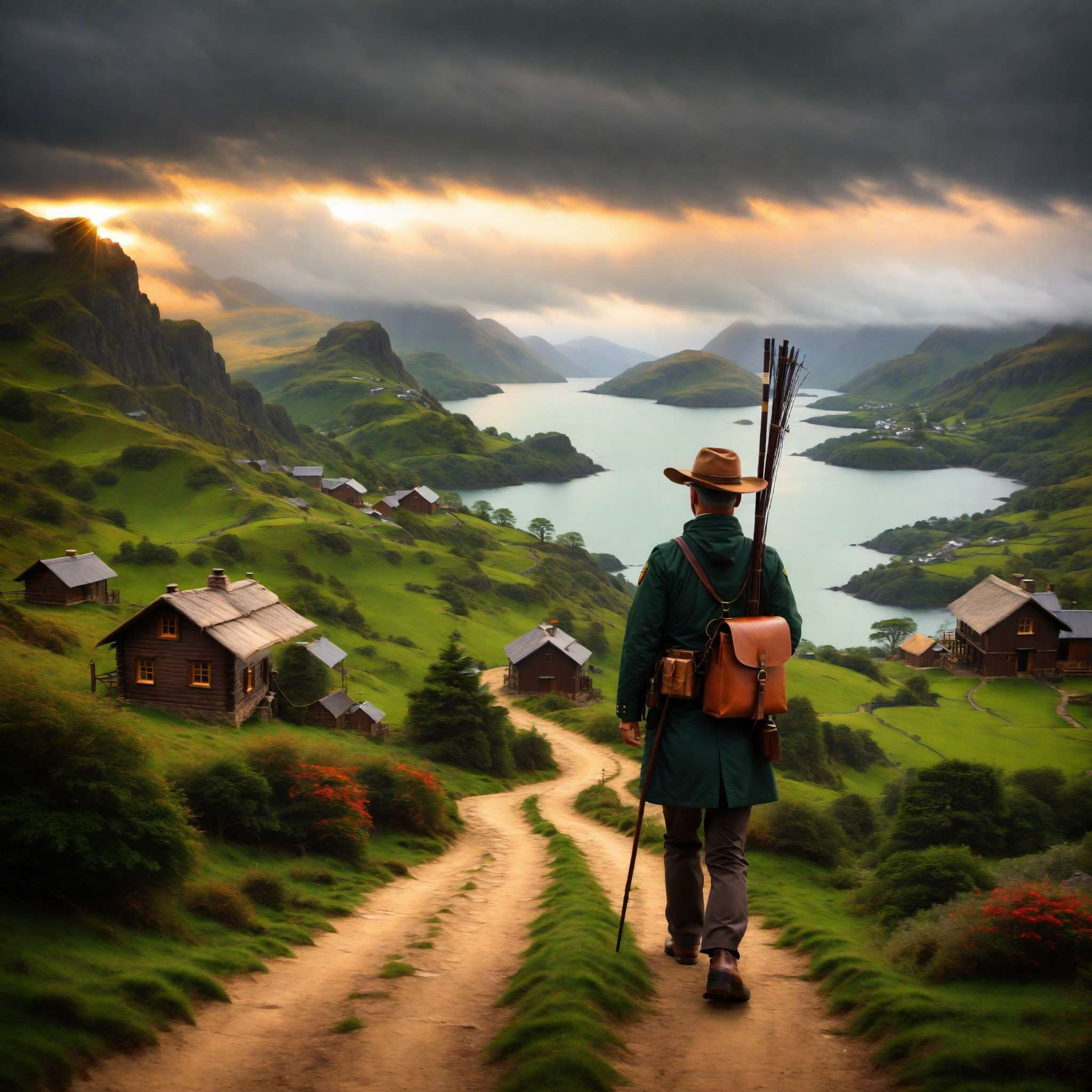
© Copyright , ZombieBunny.Org
Hiking in Knoydart
Knoydart, located in the heart of the Scottish Highlands, is often referred to as Britain’s last wilderness. It’s a paradise for hikers, with a range of trails that offer stunning views of rugged mountains, serene lochs, and sprawling moorlands.
One of the most challenging and rewarding hikes in Knoydart is the ascent to Ladhar Bheinn, the highest peak in the area. The hike takes you through diverse terrain, from lush woodlands to rocky ridges, before culminating at the summit where you’re rewarded with panoramic views of the surrounding landscapes.
The hike to Loch Hourn is another popular trail in Knoydart. This tranquil loch, often referred to as Scotland’s fjord, is surrounded by steep mountains and offers stunning views, especially at sunset.
For a less strenuous but equally rewarding hike, the trail to Airor offers beautiful views of the coastline and the chance to spot wildlife like deer, otters, and a variety of bird species.
Despite its remote location, Knoydart has excellent facilities for hikers. The Knoydart Foundation Bunkhouse offers comfortable accommodation, and there are several campsites for those who prefer to sleep under the stars. The Old Forge, billed as the most remote pub in mainland Britain, is a great place to refuel after a day of hiking.
Whether you’re an experienced hiker or a casual walker, Knoydart offers a hiking experience that combines wilderness, wildlife, and wonderful views, making it a must-visit destination for outdoor enthusiasts.
Local wildlife and flora
Knoydart, a peninsula in the Scottish Highlands, is not just a hiker’s paradise, but also a haven for wildlife and flora. The region’s diverse habitats, from its rugged mountains and moorlands to its pristine lochs and coastlines, are home to a rich variety of species.
Wildlife enthusiasts will be thrilled with the chance to spot red deer, otters, and seals. The region is also a birdwatcher’s paradise, with species like golden eagles, buzzards, and a variety of seabirds often spotted. Though elusive, the Scottish wildcat also finds sanctuary in the dense woodlands of Knoydart.
The region’s flora is equally impressive. Knoydart’s woodlands are home to native tree species like Scots pine, birch, and oak, along with a variety of ferns, mosses, and lichens. In spring, the woodlands come alive with a carpet of bluebells, while the moorlands are adorned with the vibrant purple blooms of heather in late summer.
For those interested in marine life, boat tours offer the chance to see dolphins, minke whales, and basking sharks in the surrounding waters. These tours often include a visit to the Small Isles, which are designated a Special Area of Conservation due to their rich biodiversity.
Exploring the local wildlife and flora of Knoydart offers a unique insight into Scotland’s natural heritage. It’s a reminder of the wild beauty that exists in the UK, often overlooked, but truly remarkable.
Living off the grid
Living off the grid takes on a new meaning in Knoydart, a remote peninsula in the Scottish Highlands. Accessible only by boat or a multi-day hike, the region is one of the last wildernesses in the UK. Despite its remoteness, Knoydart is home to a small, resilient community that embraces a sustainable way of life.
Living off the grid in Knoydart means generating your own power, sourcing your own water, and managing your waste. Most houses use a combination of renewable energy sources, including solar panels, wind turbines, and hydroelectric systems. Rainwater harvesting and spring water are common, and composting toilets are often used to manage waste.
But living off the grid in Knoydart is not just about survival, it’s about thriving in harmony with nature. The local community is active in conservation efforts, from rewilding projects to sustainable fishing and deer management. The Knoydart Foundation, a community-led organization, manages much of the land and promotes sustainable development.
Living in Knoydart also means embracing a slower pace of life, where community spirit thrives and nature sets the rhythm of daily life. It’s a place where you can truly disconnect from the digital world and reconnect with the natural world.
While living off the grid in Knoydart may not be for everyone, it offers a unique and rewarding experience for those seeking a deeper connection with nature and a sustainable way of life.
The Lost World of Socotra Yemen
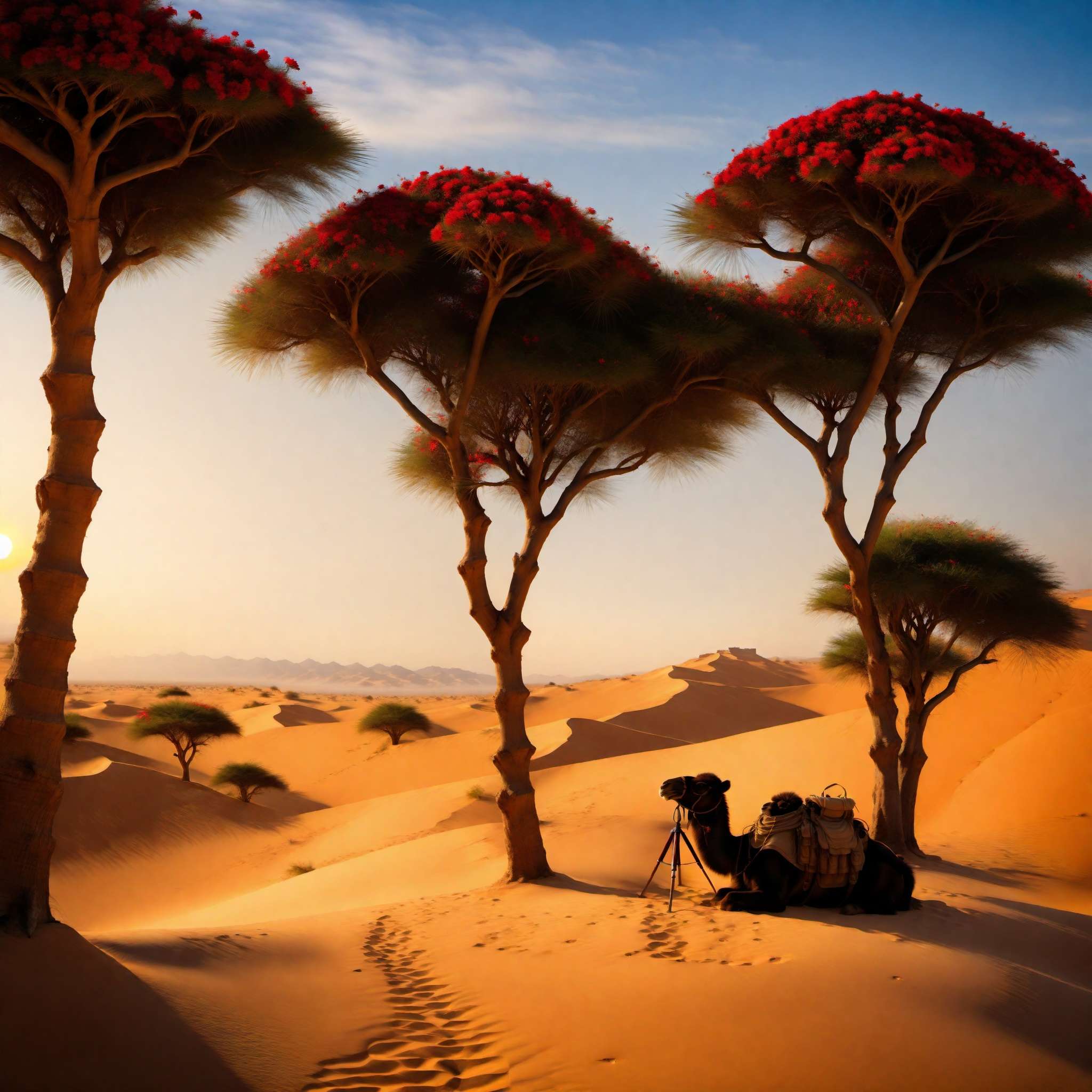
© Copyright , ZombieBunny.Org
Unique biodiversity of Socotra
Socotra, an archipelago off the coast of Yemen, is often referred to as the “Galapagos of the Indian Ocean” due to its unique biodiversity. The island’s isolation and harsh climate have led to the evolution of a plethora of endemic species – species that are found nowhere else on Earth.
The most iconic of Socotra’s endemic species is the Dragon’s Blood Tree, known for its umbrella-like shape and the red sap it produces. The island is also home to the Desert Rose, a tree that resembles an elephant’s leg with pink flowers on top.
The island’s fauna is equally unique. Socotra is home to several endemic bird species, including the Socotra Starling, Socotra Sunbird, and Socotra Sparrow. The island’s rocky terrain provides an ideal habitat for its unique reptile species, including the legless skink and the Socotra chameleon.
The marine life around Socotra is also rich and diverse, with coral reefs that are home to a variety of fish, sea turtles, and other marine species.
Despite its biodiversity, Socotra remains relatively untouched by tourism. This has helped preserve its unique ecosystem, but also poses challenges for conservation as the island faces threats from climate change and unsustainable practices.
Exploring the unique biodiversity of Socotra offers a journey into one of the world’s most unique ecosystems, a “lost world” where nature’s creativity is on full display. It’s a must-visit destination for nature lovers and those seeking off-the-beaten-path adventures.
Cultural insights and safety measures
While Socotra is known for its unique biodiversity, it’s also rich in cultural heritage. The island’s inhabitants, the Socotri people, have a unique language and traditions that have been shaped by centuries of isolation. Their traditional music, poetry, and dance provide a fascinating insight into the island’s cultural heritage. The locals are known for their hospitality, and visitors often have the opportunity to participate in traditional meals and cultural events.
However, as Socotra is part of Yemen, it’s important for travelers to take safety considerations into account. While Socotra itself is relatively safe, the ongoing conflict in mainland Yemen can affect travel logistics. It’s advised to check travel advisories and liaise with experienced travel operators who are familiar with the region.
Respect for local customs and traditions is also important. Modest dress is advised, particularly for women, and public displays of affection are generally frowned upon. It’s also advisable to ask for permission before taking photographs of people.
Despite the challenges, traveling to Socotra is a rewarding experience for those seeking unique natural and cultural experiences. The island offers a chance to step back in time, to a place where nature reigns supreme and the pace of life is dictated by the rhythms of the natural world.
Visiting Socotra requires preparation and respect for local customs and conditions, but for those willing to take the journey, it’s an adventure like no other.
Socotra’s future prospects
Socotra, known for its unique biodiversity and cultural heritage, has immense potential as a destination for eco-tourism. The island’s natural beauty and unique species attract nature lovers and researchers from around the world. With the right development and conservation strategies, Socotra could become a leading destination for sustainable tourism.
However, Socotra’s future prospects face several challenges. The ongoing conflict in mainland Yemen has implications for the island’s security and accessibility. Climate change also poses a threat to Socotra’s unique ecosystem, with rising temperatures and changing rainfall patterns affecting its flora and fauna.
Sustainable development is crucial for Socotra’s future. This involves balancing tourism growth with the preservation of the island’s natural and cultural heritage. Community involvement is key, ensuring that the benefits of tourism are shared with the local population and that local traditions and ways of life are respected.
Initiatives like the Socotra Archipelago Conservation and Development Programme, a partnership between the Yemeni government and the United Nations Development Programme, are working towards this goal. The programme focuses on biodiversity conservation, sustainable livelihoods, and climate change adaptation.
Looking ahead, Socotra’s future prospects hinge on peace, sustainable development, and conservation. With its unique natural and cultural treasures, the island has the potential to offer a truly unique experience for travelers, while serving as a model for sustainable tourism in biodiversity hotspots around the world.
Conclusion

© Copyright , ZombieBunny.Org
Summarizing the travel opportunities
The world is full of hidden gems waiting to be discovered, and our exploration of these 10 secret destinations only known to travel pros offers a taste of the diverse travel opportunities available. From the mystical aura of Leh in India, where you can experience a unique blend of culture, adventure, and stunning landscapes, to the rustic appeal of Goreme in Turkey, with its fascinating underground cities and hot air balloon rides over otherworldly landscapes.
We journeyed to the remote wilderness of Knoydart in Scotland, a haven for hikers and wildlife enthusiasts, and delved into the unique biodiversity and cultural heritage of Socotra, a remote island in Yemen. These destinations offer a wealth of experiences, whether you’re seeking adventure, cultural immersion, or the tranquility of nature.
Each destination offers unique experiences that cater to different interests. Hikers and adventurers will find their paradise in Leh and Knoydart, while history buffs and culture enthusiasts will be fascinated by Goreme and Socotra. Nature lovers, on the other hand, will be captivated by the unique biodiversity of Socotra and the pristine wilderness of Knoydart.
Exploring these secret destinations is about more than just visiting new places. It’s about immersing yourself in different cultures, encountering unique wildlife, and experiencing nature in its purest form. So, pack your bags, open your mind, and prepare for an adventure like no other. These secret destinations are waiting to be discovered.
Encouraging adventurous travel
Travel is an incredible way to broaden your horizons, learn about new cultures, and experience the natural beauty of the world. Venturing off the beaten path to explore secret destinations known only to travel pros can add an extra layer of excitement and adventure to your travels.
Choosing to travel to less-known destinations like Leh in India, Goreme in Turkey, Knoydart in Scotland, or Socotra in Yemen isn’t just about escaping the crowds or ticking off a unique destination from your bucket list. It’s about embracing the spirit of adventure, stepping out of your comfort zone, and immersing yourself in the essence of travel – discovery.
Adventurous travel to these secret destinations also offers the opportunity to engage with local communities and experience their cultures in a more authentic and meaningful way. From sharing a meal with locals in Leh to learning about the unique cultural practices of the Socotri people, these experiences enrich your understanding of the world and foster connections that transcend geographical boundaries.
Adventurous travel also encourages sustainable tourism practices, as many of these secret destinations are biodiversity hotspots or culturally significant areas. By traveling responsibly, we can help preserve these unique places for future generations.
So why not take the road less traveled on your next trip? Embrace the thrill of discovery, the joy of cultural exchange, and the awe of nature’s beauty. In doing so, you’ll not only create unforgettable travel memories but also contribute to the preservation of these extraordinary destinations.
Closing remarks
This guide has taken you on a journey through ten secret destinations, each unique in its own right, offering a blend of culture, adventure, history, and natural beauty. From the rugged landscapes of Knoydart in Scotland to the picturesque valleys of Leh in India, the underground cities of Goreme in Turkey to the unique biodiversity of Socotra in Yemen, these destinations offer experiences that transcend the typical tourist trails.
These secret destinations are a testament to the diversity and beauty of our planet. They remind us of the thrill that comes with discovering the unknown, the joy of learning about different cultures, and the awe-inspiring power of nature. But they also remind us of the responsibility we bear as travelers. To respect the cultures we encounter, to tread lightly on the environments we explore, and to contribute to the preservation of these remarkable places for future generations.
As you plan your future travels, consider venturing off the beaten path. Seek out the secret destinations, the hidden gems that offer a unique glimpse into the world’s diversity. Travel with an open mind, a respectful attitude, and a sense of adventure. In doing so, you’ll not only enrich your own life through unforgettable experiences but also contribute to a more understanding, sustainable, and inclusive world of travel.
Here’s to your next adventure, wherever it may take you. Happy travels!
Please support our site and purchase something from our store.





